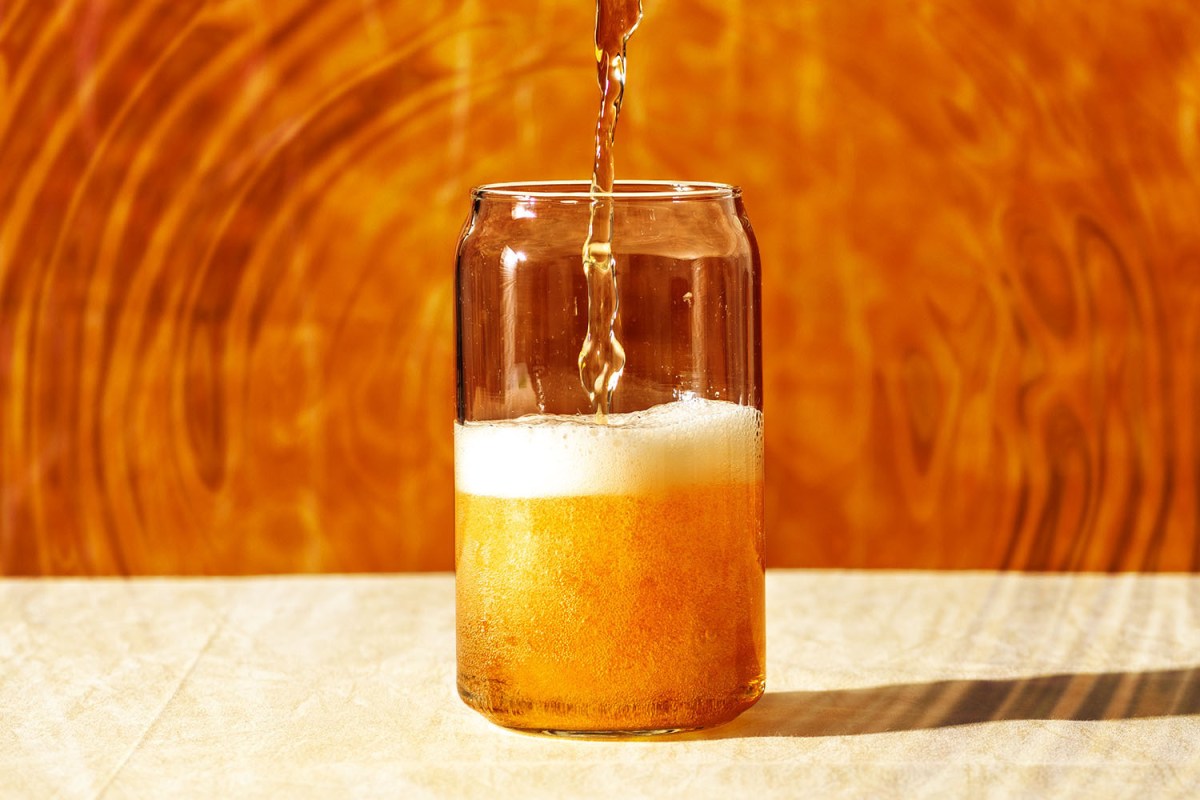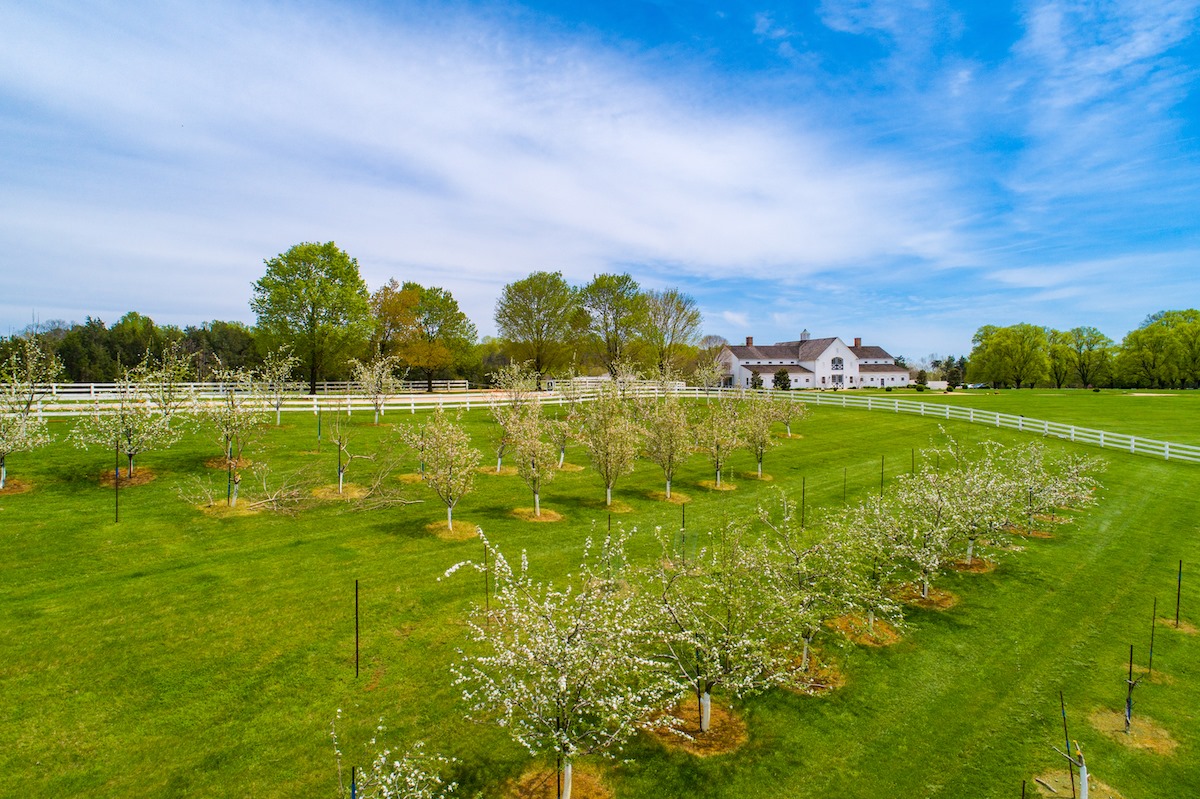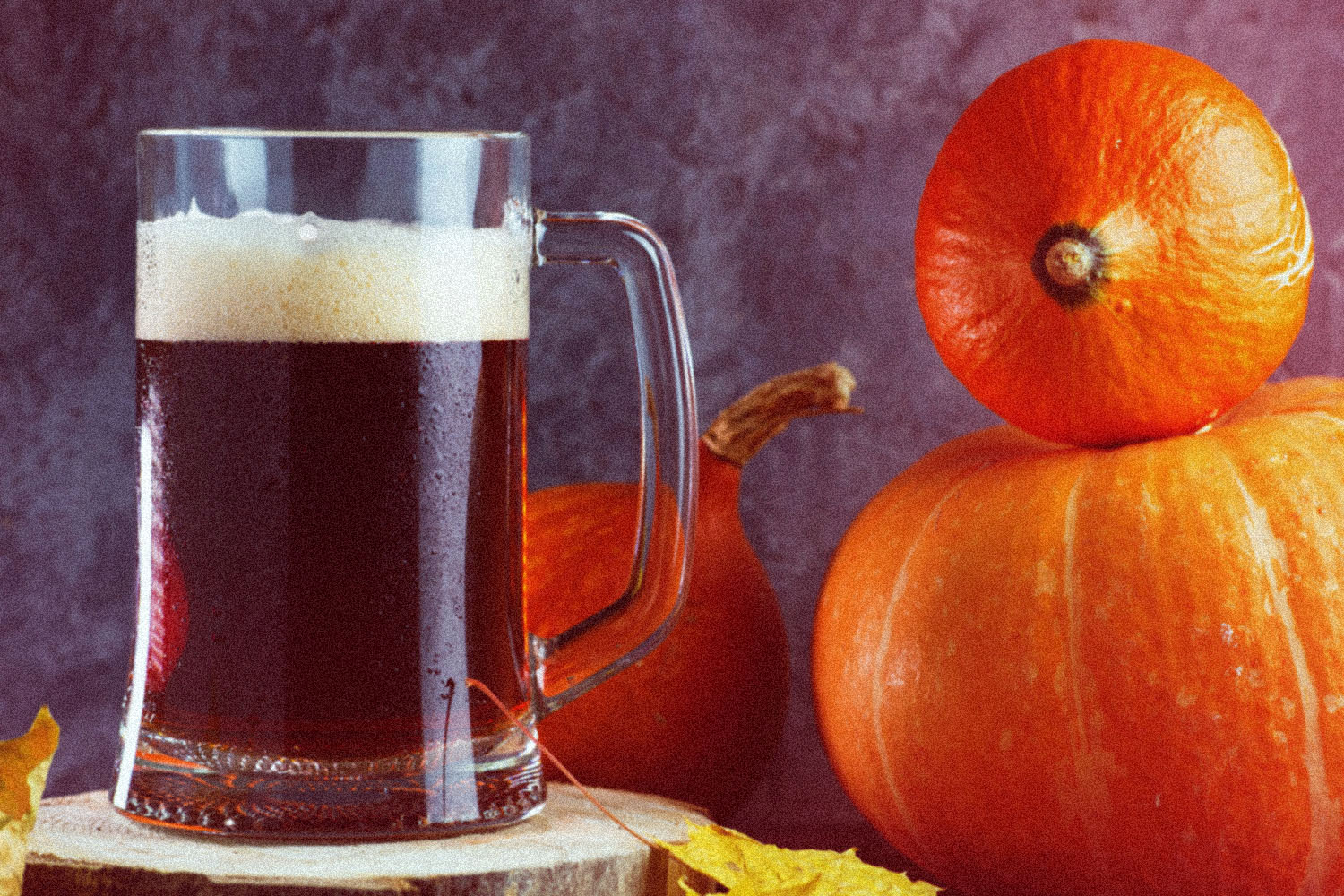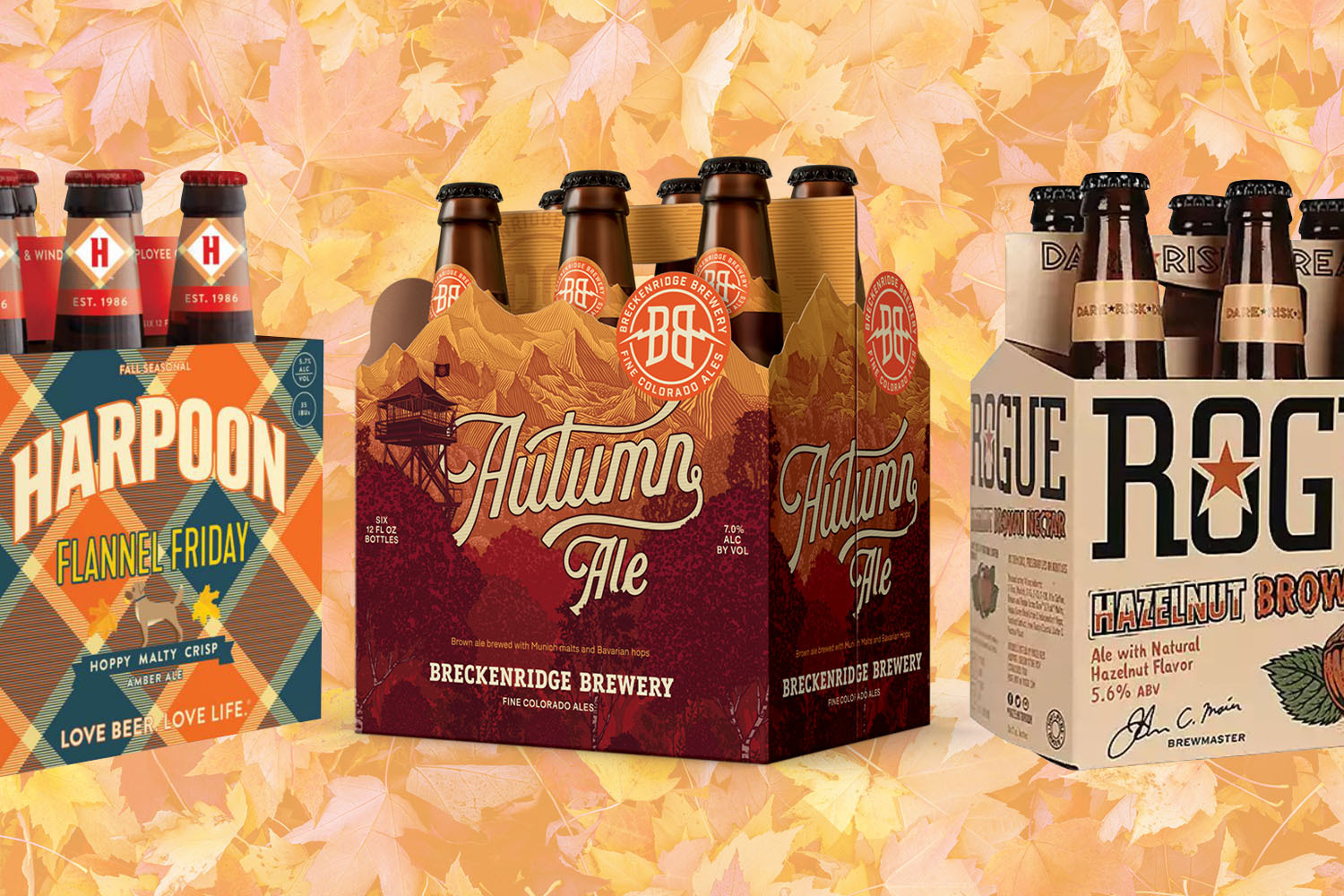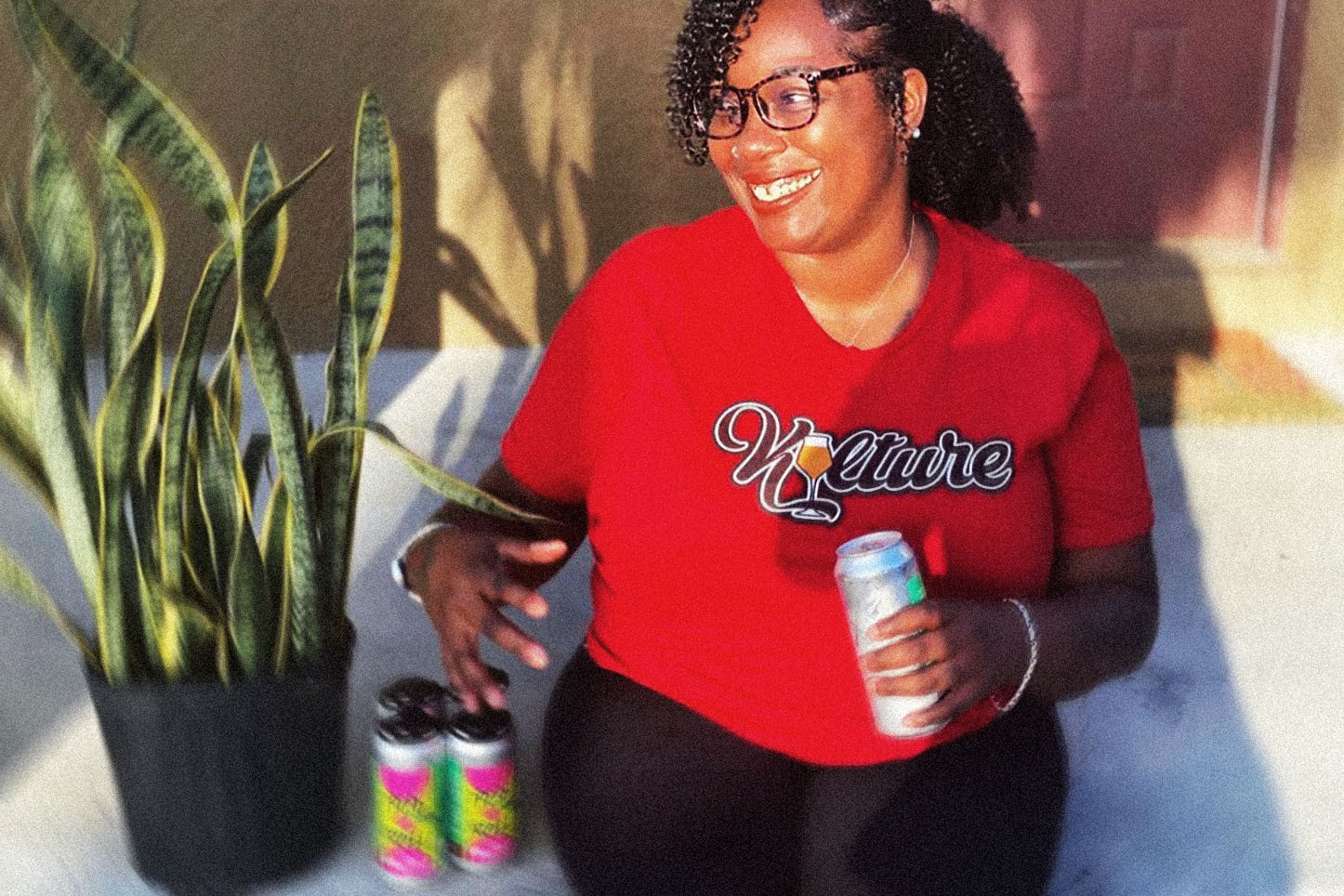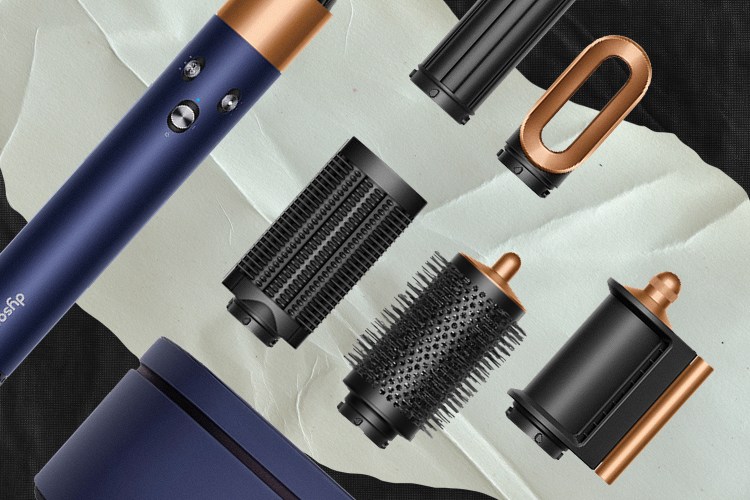While it hasn’t enjoyed the Instagrammable popularity of White Claw and rosé, hard cider is one of the most exciting lanes in the world of alcohol, growing in popularity with both casual and more refined drinkers. You might have written it off after sipping a mass-produced brand that’s as sweet as a green Jolly Rancher, but you’d be missing out on a range of beverages that thread the needle between craft beer and wine. Of course, there are many that are made for pounding at the beach, too — there’s really something for everybody.
The current American cider boom has been about 10 years in the making, with more than 1,000 cideries operating across the country in all 50 states. In 2010, off-premises sales, meaning bought from a store or brewery to enjoy at home, totaled $58.5 Million. By 2019, that number had risen to $500 million and, when combined with sales at bars and other establishments, the cider industry raked in $1.25 billion, according to Nielsen.
That’s thanks to a combination of factors: renewed interest among brewers and drinkers, states like New York enacting laws that encourage new cideries to launch, people with gluten allergies seeking out an alternative to beer, and chefs and sommeliers presenting it as the ideal pairing for their restaurant’s menu items in lieu of wine. It’s a versatile drink, and one that’s rooted in American tradition.
Centuries of Cider
It’s unclear where cider-making started, but really, anyone who had apples could create a batch. “It’s really the easiest libation to make,” says Ria Windcaller of Cider Chat, which features a podcast, tours and a wealth of information on the topic. As she points out, just leaving a gallon of store-bought non-alcoholic cider in the fridge too long can make it boozy. “You start seeing that plastic jug swelling — it’s fermenting. You could do it in an apartment in New York City.”
Developed throughout Western Europe, the cider-making tradition came to America in the 17th century and was popular with the Founding Fathers. George Washington brought 144 gallons to an election rally when he successfully ran for state office in 1758, John Adams drank it daily for his health and lived to be 90, and Thomas Jefferson made it at Monticello. Benjamin Franklin was also a fan, writing, “It’s indeed bad to eat apples, it’s better to turn them all into cider.” Cider soon proliferated away from the coast thanks to the efforts of John Chapman, the nomadic nurseryman better known as Johnny Appleseed.
Unfortunately, cider’s footing in America effectively ended with Prohibition. “You can hide moonshine distilleries, you could hide underground breweries — it’s quite hard to hide an orchard,” says Gabe Cook, aka The Ciderologist, a Bristol, England-based expert in the genre. The orchards that grew cider-making apples like Newtown Pippin and Baldwin were destroyed, leaving farmers to grow “culinary” apples like the McIntoshes and Granny Smiths you’d eat today. Martinelli’s, of the famed sparkling cider, was one of the few places to make an alcoholic version after Prohibition ended in the ‘30s, but discontinued production in 1977 to focus on its more popular non-alcoholic wares.
The recent rise in American cider’s popularity can be attributed to England in the early 2000s, where the beverage was seen, according to Cook, as “quite a rough, rustic kind of drink that puts hairs on your chest.” That changed around the 2006 FIFA World Cup, when Magners launched a huge ad campaign to portray cider as something enjoyed over ice by men and women, especially during a hot summer. In the ensuing three years, England saw a 50-percent increase in cider volume, with other brands like Strongbow popping up and smaller farms seeing a rise in sales. That boom soon made its way across the pond, where craft beer and domestic wineries were already thriving.
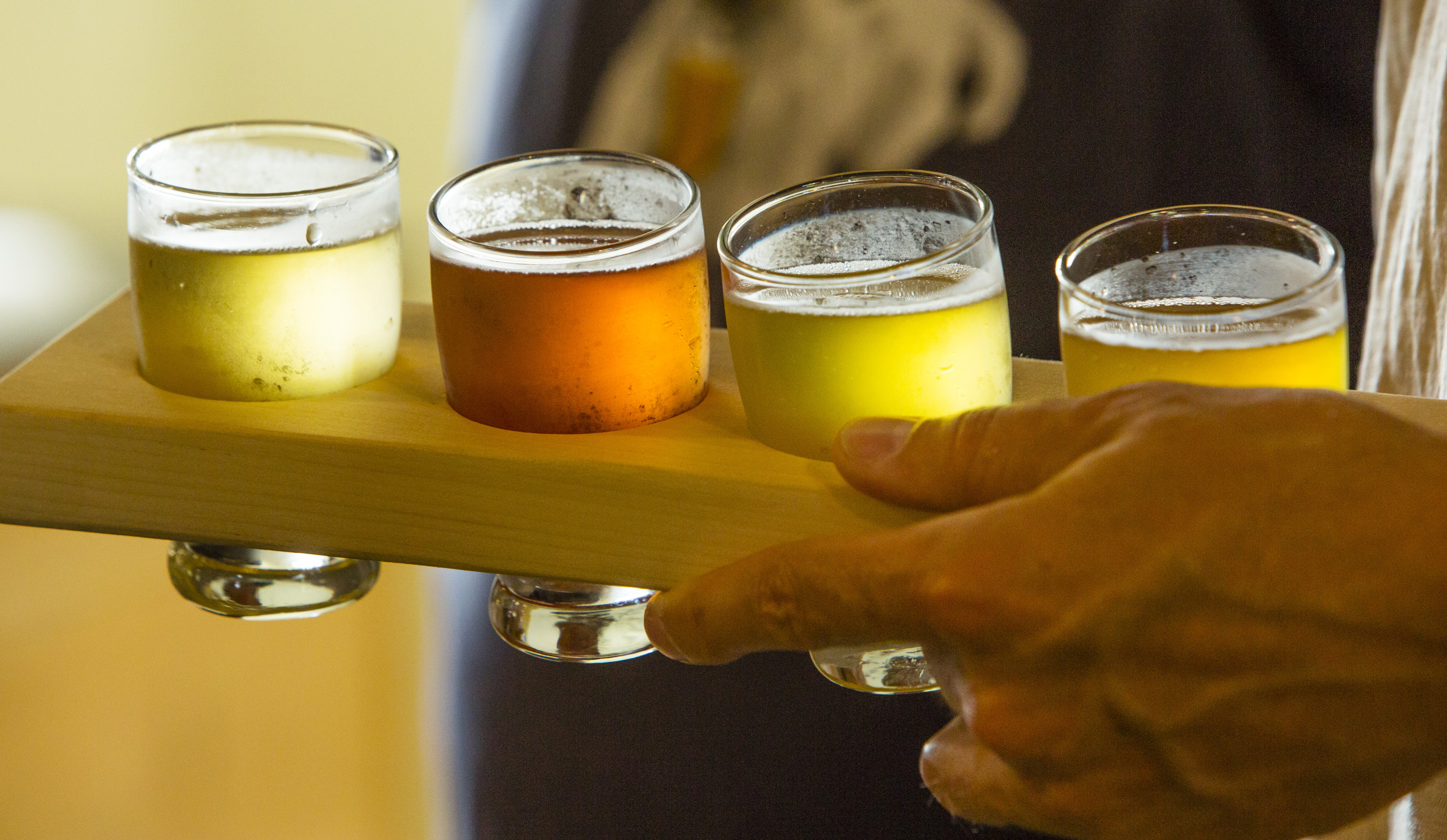
The American Growth
Cider in the U.S. is still a work in progress, with makers coming from a variety of backgrounds and tastes. You’ve probably seen Angry Orchard, the Walden, NY-based cidery that’s owned by Boston Beer Company, the maker of Samuel Adams. In certain markets, you can also find Austin Eastciders, which is fermented using imported apples to make flavors including Pineapple, Blood Orange and Brut. Of course, there’s also Stella Cidre, which is owned by the AB InBev conglomerate. Those all benefit from large distribution power, while most brands are more regional.
One of the hardships to cider’s growth is that its not a cohesive genre of alcohol. “One part of the cider scene leans toward craft beer and that language and design, punny names on the cans, and the other half leans towards like a wine style in a 750ml bottle, where they label where it’s from, what apples it’s made from and they’re using less punny names,” says Jason Wilson, author of Cider Revival. In New York, for example, Bad Seed operates more like a craft brewery, while Eve’s is more like a winery.
The other issue is that you can often look at a can or bottle and not know how it’s going to taste. Scott Ramsey, Executive Director of the New York Cider Association, is working on that with the state’s 80-plus producers: “We have a scale of dryness to sweetness, so when consumers pick up a bottle, they’ll understand where it sits on that range.” This refers to the amount of residual sugar you’ll find in the cider, but it’s an initiative that still doesn’t completely tell the drinker what they’re getting.
How to Find Your Favorite
The American Cider Association is also working on a better standard, encouraging all cideries to give more information on their labeling. Some, like Washington, D.C.’s Anxo District Dry, will tell you that they’ve used Greening, Spy and Goldrush apples that were grown within 99 miles of their operation, with native and wine yeasts. Others might only tell you the ABV. For reference, Wilson says that “cider really hits its sweet spot around 6.9 percent alcohol and higher,” while Ramsey touts that level as one of the beverage’s advantages over wine: “You can consume more of it over a longer period of time and not have the alcohol overtake the experience of a delicious meal or a gathering with friends.”
Cook and Windcaller hope consumers will soon learn the differences between styles and apples in the way that they can distinguish a lager from an IPA or a chardonnay from a pinot noir. The USDA is also trying to help, recently commissioning a $500,000 four-year study with researchers from Cornell and Virginia Tech to determine the descriptors that should become the industry standards.
In the meantime, Michelle McGrath, Executive Director of the ACA, breaks it down to five categories: Cider made from 100 percent apples; perry, which is cider made from pears; botanical, which are co-fermented with hops, herbs and spices or have them added later as an “adjunct”; fruit, which are co-fermented with or have an adjunct like grapes, berries, etc.; and dessert/ice, which retains more of the sweetness and sugars of the apples. Rosé ciders, which exploded at the same time as the wine, can fall into a couple of those categories, as sometimes they’re made from 100 percent red-fleshed apples or fermented with a hue adjunct, like hibiscus. “Exploring those five categories is really a fun way to get to understand what type of cider you like,” she says.
There are also geographical differences, thanks mainly to terroir, the local climate and soil conditions that affect flavor. “Each region likes to say ‘we make the best apples in the world,’” Windcaller says, but online ordering allows curious drinkers to test them all out. Her general description, though, is that the Pacific Northwest has more fruit-forward ciders, the Michigan/Midwest area is more acidic and the New York/New England brands have more tannins, which add a mouth-watering dryness. All can be paired with various foods, from seafood and barbecue to cheese and chocolate.
To that end, there are no rules to discovering what cider is right for you — like beer, wine or any spirit, you should drink what you like. But if you’re looking to explore what this apple-based beverage has to offer, there are a few tips from the experts. Wilson says to look at the labels: if the cidery bothered to note which orchard its apples came from, they’re taking the craft seriously. McGrath says to visit a cider bar or restaurant that offers flights, and go from sweet to dry. Windcaller has a similar take: “I would start with the ingredients. Can they make a quality 100-percent cider, just apples with no blueberries or raspberries? If they do, then I’ll probably go back.”
Or, as Cook succinctly puts it, “It’s just about exploring and having a go.”
Every Thursday, our resident experts see to it that you’re up to date on the latest from the world of drinks. Trend reports, bottle reviews, cocktail recipes and more. Sign up for THE SPILL now.
